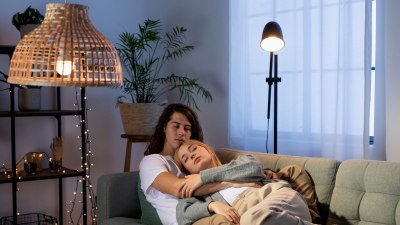Why Coffee Hits Different When the Sky Is Bright and Harsh
Explore why coffee tastes uniquely impactful under bright, harsh skies and the science behind this sensory experience.

Coffee is not just a beverage; it’s a ritual shaped by environment, mood, and context. Among various experiences, many people notice that coffee 'hits different' when consumed under a bright and harsh sky—usually a clear, sunny day with strong sunlight and vibrant outdoor settings. This phenomenon isn’t just poetic but rooted in sensory psychology, environmental factors, and even subtle physiological responses.
To understand why coffee's impact changes with bright, harsh skies, we need to dissect multiple layers of sensory input and cognitive processing. It’s an interplay between the external environment, the body’s reaction to stimuli, and the brain’s interpretation of taste and aroma. This article will explore these factors step-by-step and reveal why bright, harsh skies can elevate the coffee experience.
Environmental Influence on Coffee Perception
The environment significantly shapes how we experience taste and aroma. Taste is not isolated to the tongue; it's influenced by smell, sight, sound, and even touch. The brightness of the sky can alter visual input, which in turn shifts our perception of the coffee’s color, richness, and appeal. Strong sunlight intensifies colors, making a dark black coffee appear more robust, while golden crema can look more enticing under a vivid sky.
Moreover, the harshness of the sunlight can affect mood and alertness. Bright light triggers the brain to release neurotransmitters like serotonin and dopamine, which elevate mood and increase alertness. This heightened state can make the sharp bitterness or aromatic nuances of coffee more pronounced and enjoyable.
Psychological Effects of Bright, Harsh Light
Bright harsh light is a natural stimulant. Exposure to sunlight suppresses melatonin production—the hormone responsible for sleepiness—and increases cortisol levels, which is a hormone associated with alertness and stress responses. These biochemical changes prepare the body for wakefulness and heightened sensory input, potentially enhancing the coffee-tasting experience.
The increased cortisol and serotonin can make coffee’s caffeine hit feel more potent because your brain is already primed for alertness. The synergy between environmental stimuli (bright sunlight) and coffee’s psychoactive properties intensifies the overall sensory experience.
Physiological Responses to Coffee and Sunlight
Caffeine absorption and metabolism can be influenced by several factors including circadian rhythm, body temperature, and hydration status—all affected by exposure to bright, harsh sunlight. For instance, UV rays can mildly raise skin temperature and stimulate the nervous system, potentially accelerating caffeine metabolism and leading to a quicker or more intense sensation of stimulation.
Additionally, when drinking coffee outdoors on a bright day, people often become more physically active or animated, leading to faster circulation and an increased rate of caffeine distribution throughout the body. This dynamic physiological environment can make coffee's energizing effects feel sharper.
Contextual and Cultural Factors
Culturally, coffee drinking is often associated with leisure, social interaction, and personal or creative time, frequently conducted outdoors in pleasant or striking environments. Bright, harsh light often indicates daytime where social or productive activities peak, layering additional context onto the act of drinking coffee.
These contextual cues condition the brain to associate coffee under such conditions with productivity, alertness, and pleasure. This can create a positive feedback loop enhancing the perception that coffee tastes better or 'hits different' when the sky is glaringly bright.
Sensory Contrast and Coffee Flavor Profiles
The intensity of sunlight can enhance sensory contrast. Under muted or overcast conditions, coffee's flavor can feel more subdued; bitterness may blend softly with creamy or nutty tones. However, under bright harsh lighting, sharper flavor notes like acidity and bitterness become more pronounced to the drinker, much like how bright light can deepen the contrast in colors.
This heightened contrast in sensory input—visual and gustatory—leads to a unique flavor profile perception. The acidity of a single origin pour-over or the smoky edges of a dark roast may “pop” more vividly under these conditions.
The Role of Temperature and Hydration
Bright, harsh skies are often correlated with warm or hot weather, which influences how we consume coffee. Coffee temperature can affect how quickly caffeine and aromatic compounds release, and warm weather can lead to quicker cooling of the beverage, subtly changing its taste and mouthfeel over time.
Furthermore, warmer weather influences hydration status, and dehydration can heighten sensitivity to bitterness, a prominent flavor note in coffee. This means that under bright, hot conditions, coffee’s bitter or intense notes might be felt more acutely, contributing to the perception that the drink 'hits different.'
Light-Induced Mood Changes Enhance Taste Perception
Psychological studies demonstrate that mood directly affects taste perception. Bright light exposure improves mood and cognitive function, which can boost the brain's receptiveness to positive sensory experiences. Drinking coffee in such a state means the brain is more alive to nuances in flavor and aroma.
This mood-taste link is why quiet, sunny mornings often produce a more satisfying cup of coffee than gloomy or overcast days. The positive emotional state induced by natural light amplifies sensory enjoyment and the caffeine’s alerting effects.
Scientific Studies Supporting Environment-Taste Interaction
Several scientific experiments confirm that environmental conditions influence taste and beverage perception. For example, research shows that color and lighting impact sweetness perception in foods, and that well-lit environments enhance flavor detection capabilities.
Though specific studies on coffee and bright harsh light are limited, the principles of sensory interaction apply. Enhanced visual contrast, mood elevation, and physiological arousal combine to alter taste perception in real time, supporting the anecdotal evidence many coffee drinkers share about how coffee tastes uniquely vivid on sunny, bright days.
Practical Tips to Enhance Your Coffee Experience Outdoors
To optimize the unique interaction between bright, harsh skies and coffee flavor, consider these tips:
- Choose light to medium roasts with bright acidity to complement the sensory contrast heightened by sunlight.
- Consume coffee at a temperature that retains flavor integrity but suits warm outdoor conditions.
- Create comfortable shade to reduce glare without dimming natural light effects or choose morning hours when the light is bright but less harsh.
- Stay hydrated to balance flavor sensitivity and maintain caffeine’s effectiveness without unpleasant bitterness.
- Pair coffee with complementary snacks that enhance mood and taste, like fresh fruits or nuts, to balance bitterness and acidity.
Additional Factors That May Play a Role
Other subtle influences could explain the unique coffee experience under bright, harsh skies:
- Wind and air quality: Fresh, clean air can sharpen olfactory senses, improving aroma perception.
- Surrounding scenery: Natural environments with greenery or urban landscapes create emotional contexts that enhance enjoyment.
- Accompaniment of sounds: Ambient outdoor sounds, like birds or city life, can positively affect mood and sensory focus.
- Body posture and activity: Sitting upright and moving more in bright light can improve circulation and attentiveness, amplifying caffeine's effects.
Why Coffee Hits Different When the Sky Is Bright and Harsh
In sum, coffee’s altered taste and impact under bright, harsh skies are the result of a complex synergy between environmental stimuli, physiological changes, and brain processing. Bright light elevates mood and alertness, intensifies visual and sensory contrasts, and interacts with caffeine metabolism to create a heightened experience.
This multi-layered phenomenon makes morning or daytime coffee outdoors especially satisfying, demonstrating how context can intricately shape even the most familiar daily ritual.
Understanding this interplay not only enriches appreciation for coffee's nuances but also offers insights for improving personal coffee rituals wherever you are. The next time you sip your brew under a glaring bright sky, remember that your experience is enriched by more than just the coffee bean—it’s also the light, mood, and physics all working in harmony.











